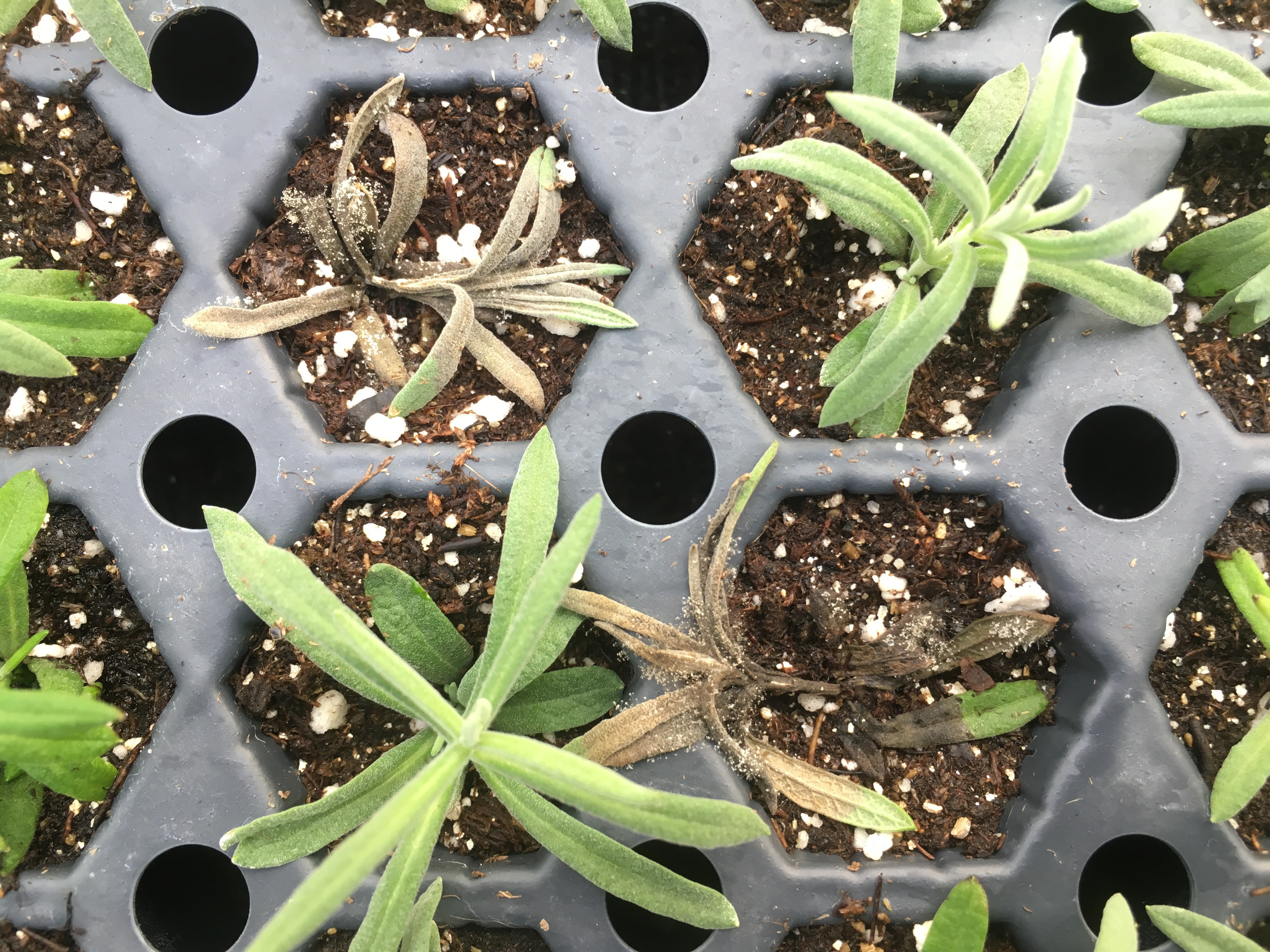Southwest Michigan greenhouse situation report – January 2019
Monitor crops for early signs of infestations.

Snowfall throughout December was sparse (to say the least) in southwest Michigan. According to Michigan State University’s Kalamazoo Enviroweather station, the average daily high temperature in the Kalamazoo area was 39 degrees Fahrenheit with an accumulation of 91 degree-days above 32 F from Dec. 1–31, 2018. That is considerably warm! These higher-than-average temperatures produced more rain than snow and left many wondering if winter would ever arrive. January, as you may have noticed, has been decidedly colder with an average daily temperature of 24 F and less than half of the accumulated degree-days (base 32 F) of the previous month. Winter is here!
Spring crop status
Things are still a little quiet in most southwest Michigan greenhouses. Seed houses and propagation rooms have been warm since December with benches and floors nearly full of tender young plants (Photo 1). Most of these plants aren't quite ready for transplanting, however, so most production areas are still fairly chilly and labor crews are small.
Diseases
Disease pressure has been very low in southwest Michigan greenhouses. With that said, nearly every propagation house I've visited has at least one crop struggling with Botrytis or some opportunistic water mold. In particular, I've seen problems with culinary herbs (Photo 2), canary wing begonias and Helichrysum (Licorice plant). This is perfectly normal and due largely to the fact that unrooted cuttings cannot be allowed to dry down or they'll die. Some plant species, however, really don't like getting water on their leaves and are very sensitive to wet foliage (e.g., Rosemary). To get around this problem, growers will often create "tents" or row covers using a geotextile fabric. This helps keep foliage drier, but allows light, heat and humidity to reach the rooted cuttings. If you’re struggling with Botrytis, consider building a Reemay (or similar product) tent for the next crop and see if it helps.

For related information, check out the excellent article W. Garrett Owen has written on how to manage moisture in vegetative cutting propagation.
Insects
By all accounts, thrips numbers have been average to below average. I have not seen much damage at this point in the season, but sometimes damage doesn't become apparent until much later when it's too late (e.g., Fuchsia). The MSU Extension floriculture team encourages growers to implement a scouting and monitoring program at their greenhouse. This can be as simple as deploying yellow sticky traps and counting the number of captured thrips every week. Dave Smitley from the MSU Department of Entomology provides suggestions in his annual greenhouse pest management recommendations.
Spider mites have been found in Bidens, Vinca vine, Diascia and Dracaena “spikes.” Although I haven't seen them yet, it's always good to keep an eye on crops like Cordyline, Mandevilla/Dipladenia, Ipomoea and Hedera ivy. They can be found by inspecting the underside of lower leaves with a hand lens and are large enough that all life stages are easily visible. They pierce individual plant cells and suck out the contents, so the damage looks like yellowish-white speckles as if someone rubbed the leaf with sandpaper.
The number of plant species on which we find broad mites gets larger every year. So far this season, we've seen them on Salvia, Thunbergia, Crossandra, Alternanthera (a new one for me!), Fuchsia and Hedera ivy (cv. ‘Gold Child’). It’s also good practice to monitor common hosts such as New Guinea impatiens, begonias and Scaevola. Finding them with a hand lens is certainly possible, but it can be a very difficult when populations are small. Broad mites have toxic saliva and feed preferentially on new tissue, so look for brittle, hardened leaves and buds at the top of the plant.
Aphids were found in some Portulaca earlier in the month. Some early season whiteflies have been found in Lamium and Salvia (cv. ‘Black and Blue’). January temperatures favor populations of the greenhouse whitefly (Trialeurodes vaporariorum) over the more heat-loving silverleaf whitefly (Bemisia tabaci), which has become more difficult to control. Please contact a member of the MSU Extension floriculture team if you're struggling to control a whitefly infestation. We're happy to identify the species and discuss management options.
Early season pest control is critical for late season success. Pest populations grow exponentially and they develop faster with warmer temperatures. Taking a little extra time to monitor and treat infestations in January can be tremendously helpful in April and May when the temperatures are higher and everyone is busy. Conventional management product suggestions for all pests mentioned in this article can be found in the “Greenhouse Pest Management with Insecticides” tip sheet.
Thanks to Mark Crossley of West Michigan IPM for sharing his time and expertise.



 Print
Print Email
Email

